
12 Oct2015
Written by Sophie Le Bars - Denost. Posted in News, Horses, Uncategorized
DE-WORMING HORSES ROSTRENEN VETERINARY CENTRE BRETAGNE TO

The end of the year is a period hinge in the management of your horses parasitism. Indeed, parasites, unwelcome guests of your animals, laid ; the pastures are contaminated eggs or larvae and horses réinfestent as and when they eat.
When mentioning the management of parasitism, often summarizes this action to the single deworming. However, the systematic and improper deworming use inevitably leads to the loss of efficiency of the latter with the appearance of resistant pest populations. Some countries around the world already face resistant populations of worms.
Veterinary Clinic team proposes to improve the practices of deworming in agreement with the new field data and new scientific advances :
1/ The use of wormers must be made in a reasoned way, following the creation of a FECAL *. to check for the presence of such and such parasite. Thus, It reduces the number of annually given de-worming, and left to live a "refuge" of parasites which will remain susceptible population wormers. Furthermore, from a budgetary point of view, the economy made in purchase of Wormer will largely cover the costs of fecal.
2/ Other forms of struggle are to be adopted :
- Keep horses by age class
- Avoid overgrazing : have 1 hectare by horse
- Pick up the feces, Ideally 2 twice a week (very effective but binding)
- Practice rotation annual pastures or alternate grazing cattle/horses (because the larvae of strongyles are resistant in the Middle)
- Thoroughly clean the box of foaling (parascaris infection)
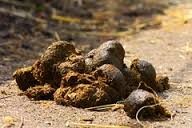
|
The FECAL, What is it, What's the point ?
It is one simple method, fast and inexpensive which allows you to have a photograph at a given moment of the parasitic status of your horse. It is a microscopic analysis from fresh droppings (picked up cleanly without soil/debris and immediately after defecation) and sent within 24 hours to the clinic.
The interests :
- In case of illness : diarrhea, weight loss, colic...
- On a horse isolated, whether it is necessary to deworm
- A herd, detect carrier animals (20% animals host 80% parasites)
- In a farm, test the effectiveness of a Wormer by 2 coproscopy to 2 weeks apart.
|
Price : 13.33€ TTC first
Then €9.70 TTC the following
|
We are looking for :
- The various parasite eggs (redworm, Strongyloides, Ascaris, Taenia...).
- Their respective quantities are expressed in egg per gram.
The conclusions :
- Quantitative analysis allows us to determine the need to deworm the horse (threshold of 200 O.PG. for the redworm)
- Qualitative analysis is interesting because some parasites should not all be present in the horse. Their mere discovery means that it be deworm.
The limits of this analysis :
- Worms excrete not continuously eggs (less in winter, variable, depending on species ex : Taenia). Pinworm eggs will not be found in the feces (only on the anus).
|
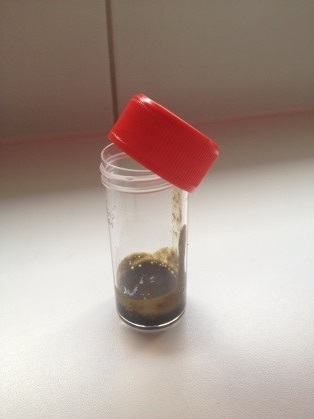
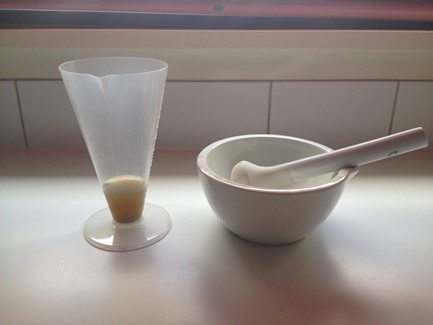
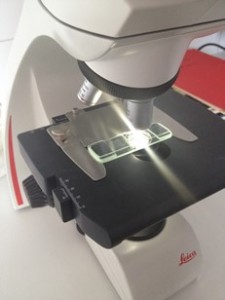
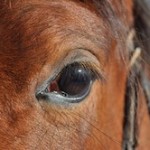
10 May2015
Written by Sophie Le Bars - Denost. Posted in News, Horses
.
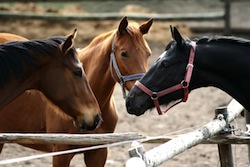
The wounds are a problem frequently faced by horse owners.
In front of a wound, It should be of quickly call the veterinarian, especially if it is necessary to suture the wound: in this case indeed the suture must be quickly carried out. The veterinarian will advise you on the best approach to adopt.
Here are some tips allowing you to make the right moves pending the veterinarian, and especially to avoid making errors.
28 Feb2014
Written by contact@vetup.com. Posted in Horses
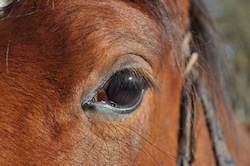 It's recurrent Uveitis or inflammation of the uveal (internal vascular structure of the eye). The origins are varied : viral or bacterial infections ; parasitism ; trauma but also a number of unknown causes (irritating, Allergic ?).
It's recurrent Uveitis or inflammation of the uveal (internal vascular structure of the eye). The origins are varied : viral or bacterial infections ; parasitism ; trauma but also a number of unknown causes (irritating, Allergic ?).
28 Feb2014
Written by contact@vetup.com. Posted in Horses
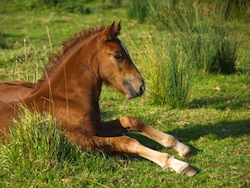 It is a serious condition due to poorly known lesions of the nervous system. It is part of the redhibitory defects and is incurable.
It is a serious condition due to poorly known lesions of the nervous system. It is part of the redhibitory defects and is incurable.
28 Feb2014
Written by contact@vetup.com. Posted in Horses
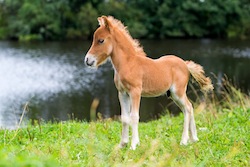 Diarrhea may be of bacterial origin, viral, parasitic or even linked to stress in the foal.
Diarrhea may be of bacterial origin, viral, parasitic or even linked to stress in the foal.











